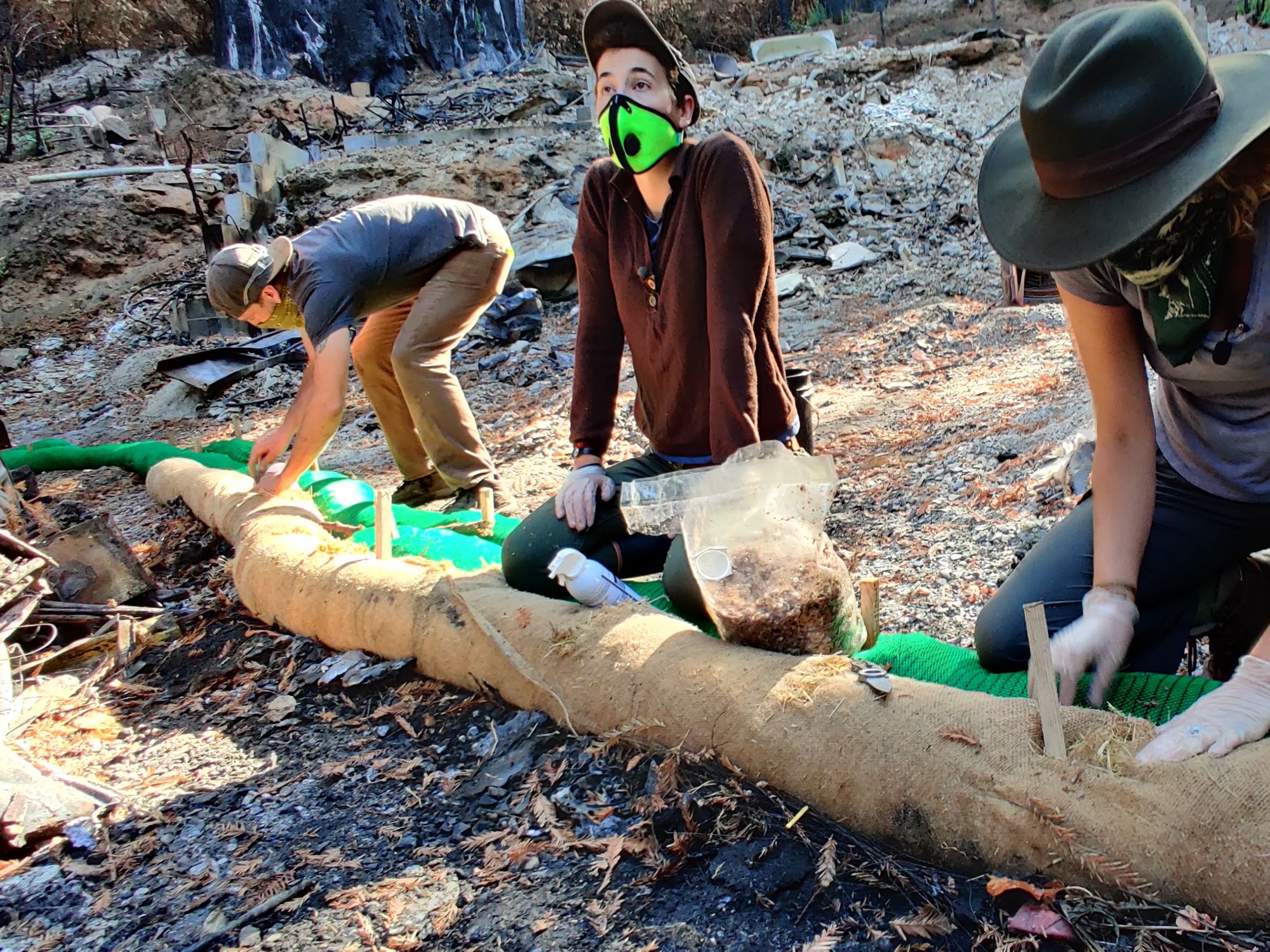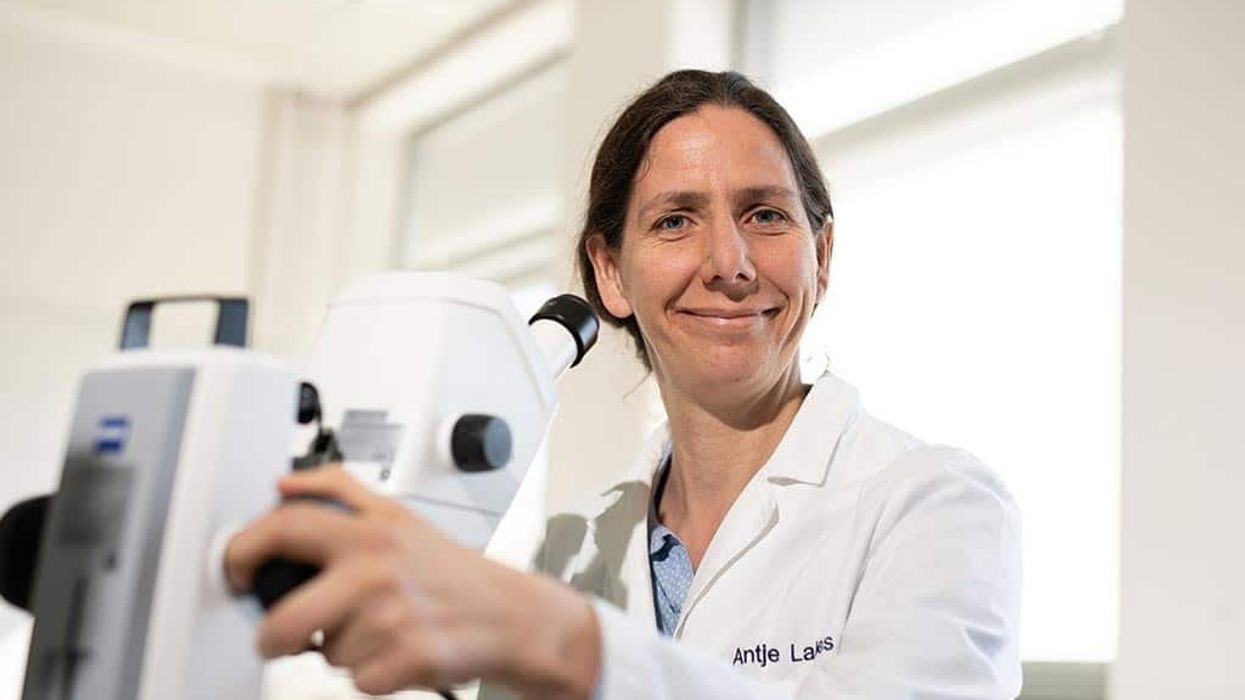
More than 30 years after its closure, the acrid smell of diesel still lingers in parts of a former freight rail yard on the banks of the Los Angeles River.
Pieces from old trains are scattered across the sprawling site, in soil so laden with contaminants that researchers have seen it spontaneously catch on fire on a hot day.
The remnants of Taylor Yard’s industrial past classify it as a brownfield — one of about half a million such contaminated sites across the country, and one of the 90,000 that are in California alone. This brownfield, saturated with hydrocarbons and heavy metals, is one of three sites that University of California, Riverside, mycologist Danielle Stevenson is using as a testing ground for a radical cleanup solution: fungi.
‘Dig and dump’ — a common way to refer to excavation and disposal — is considered the most conventional and well-established remediation technique for places that contain contaminated soil. It’s simple but expensive: soil is removed and transported to landfill for disposal. While costs vary with the complexity of each site, some estimates predict that soil roughly the volume of an Olympic pool can cost at least $500,000 to remediate in this way, with hauling the primary expense. To put that into context, the City of Los Angeles has budgeted $120 million to clean up Taylor Yard using soil excavation alongside other remediation techniques.
Seeking a way to address the root cause of contamination with a more natural and possibly cheaper alternative, several biologists are tapping into fungi’s decomposing abilities for these toxic sites. Enzymes produced by some species of fungi can break down pollutants in soil into less toxic forms or into nutrients in a process known as mycoremediation. Fungi can also latch onto the roots of plants to help the plants absorb heavy metals. Stevenson’s project is one such example of these techniques used in the field, opening the potential for fungi to give new life to the vast areas of unusable, polluted land across the country.
But the process is still nascent. Results in lab conditions are impressive, but the logistical and environmental conditions at former industrial sites remain a challenge.
Changing from the ground up
Once introduced to a contaminated environment, fungi “literally eat contaminants” much the same way they would degrade a dead tree in nature, Stevenson explained. They secrete enzymes that can break down complex pollutants into simpler components that the fungi absorb back into their system. Eventually, organic contaminants such as diesel and polycyclic aromatic hydrocarbons — the byproduct of incomplete combustion — can be metabolized by the fungi into less harmful compounds, such as carbon dioxide, water and mineral nutrients. In the lab, fungi are also adept at cleansing soil of pesticides, some phthalates and even TNT. Fungi can also take up heavy metal contaminants (though not as effectively as other bioremediation options.) There’s also limited research suggesting fungi could break down per- and polyfluorinated substances — known as PFAS or “forever chemicals” — but it’s not clear whether the resulting components would be less harmful.


In practice, this is not fungi as we know it. The mycelium — the root-like part of fungi that grows like a web — does most of the remediation work by secreting enzymes and trapping metals.
“You have to remove the imagination of having the fruiting bodies, the mushrooms growing,” Antje Labes, a microbiologist at the Flensburg University of Applied Sciences in Germany, told EHN.

For Stevenson’s work, the fungi were in the form of spent blocks and were used in combination with native California plants. She used Pleurotus ostreatus, a type of oyster mushroom, as well as species of fungi already in the soil, and mycorrhizal fungi — a mix of ‘plant-friend’ fungi that form a mutually beneficial relationship with the roots of plants. The fungi improve the plant’s ability to survive by increasing their root surface area and helping nutrient uptake. Fungi don’t pull up heavy metals effectively on their own, but can help plants do so. By using the same mechanisms that pull up nutrients such as nitrogen and phosphorus from the soil, plants can absorb heavy metals such as lead, chromium and arsenic but don’t completely degrade them, explained Labes, meaning the plants have to be removed to eliminate the contamination.
After three months, Stevenson reduced organic contaminants by more than 50% in plots of soil at Taylor Yard and two other sites in Los Angeles. By the end of the year, the contaminants were “pretty much gone” in the three-acre plots of fungi and plant-treated land, according to early results that are not yet published. She witnessed areas with no visible signs of life undergo a profound change. The fungi renewed the formerly inhospitable land, creating an environment where worms, birds and butterflies returned to the treated areas, Stevenson told EHN.
Fungi after fires
Aside from cleaning up industrial footprints, fungi are also restoring land ravaged by wildfires. Following the deadly Camp Fire in 2018, the non-profit Butte Remediation in California had experimented with using oyster mushrooms to remediate burned motorhomes and cars. Inspired by results that found reductions in dioxins and polycyclic aromatic hydrocarbons, Maya Elson, a mycologist at CoRenewal, chose five sites in Santa Cruz County to observe how fungi could help soil health following the wildfires that struck California two years later.

After a fire, filter socks — a straw-filled cylindrical tube designed to trap particles and debris as water flows through — can be placed around a burned area to prevent erosion and trap pollutants, preventing burned structures from leaching toxics into nearby waterways. Elson is introducing a local variety of oyster mushroom to these filter socks. While the tubes prevent erosion, the idea is that the fungi will degrade any toxic substances that come through. Though too early to draw conclusions, Elson told EHN early findings suggest improvement in the way soil particles bind together, potentially leading to less erosion.
The scalability problem
While people have been experimenting with mycoremediation for decades, examples like Stevenson’s and Elson’s that go beyond the lab are rare. And field work itself poses challenges. After decades of supporting heavy machinery and industrial buildings, soil can become so compacted that it resembles concrete, Stevenson said. At some sites, she “could not even dig,” and had to rent a generator and a hammer drill to take a soil sample. Pollutants can also become more challenging to degrade over time. Fresh diesel tested in lab conditions will yield effective results, but age can make contaminants trickier to degrade. Stevenson also cites water availability as a crucial component to mycoremediation. “Maybe it sounds easy, but it really isn’t in arid areas where there’s drought,” Stevenson said. Delivering water to sprawling sites in inaccessible locations might also be expensive or logistically impossible.
Varieties of oyster mushrooms are often used because they’re well-studied and relatively easy to cultivate or source. “That doesn’t necessarily mean that they’re always the best species to be working with,” Elson said. Different fungi have varying abilities in degrading specific pollutants since they produce different enzymes. Millions of fungal species exist, but only a fraction have been identified, let alone studied. Not enough is known about which species would be most suitable for specific remediation scenarios.
But for enthusiasts like Stevenson, who has been working on mycoremediation for more than a decade, the unknown fungi are a vast, untapped library of tools for the pressing environmental challenges posed by polluted land. “It’s just profound seeing the change [in the environment], and fungi are so essential in this,” she said. “They’ve been so overlooked in bioremediation.”

